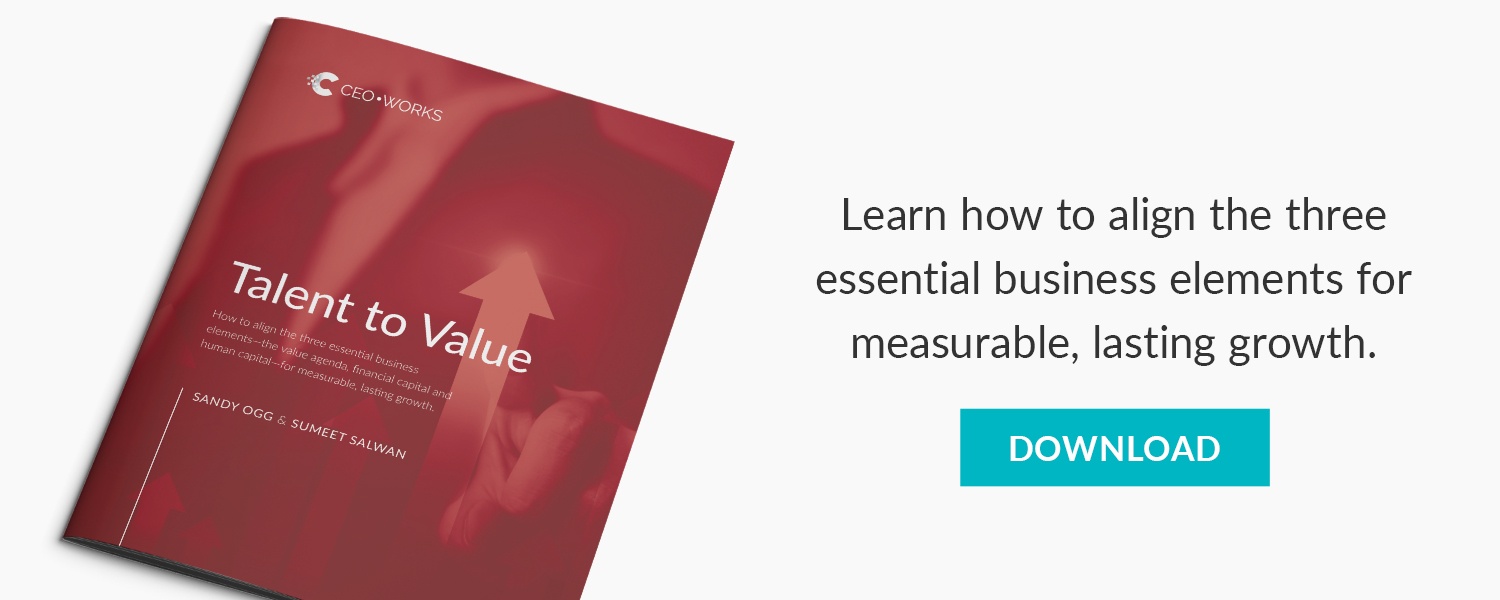Welcome to part four of our five-part series on Connecting Talent to Value.
No high-stakes venture would be worth undertaking without first considering the risks involved and determining if and how those risks are to be mitigated. We want to bend the curve upward, not the other way around so we use a simple traffic-light system to clarify the dimensions of risk.

Minimize Value at Risk

One of the distinguishing features of the talent-to-value approach to management is that it aims to minimize value at risk while rapidly redeploying talent from points of lower return to points of higher return. So far we’ve designed The List, which connects the value agenda to specific critical roles. We’ve connected possible talent to those roles and, in doing so, seen how we can connect talent to value. Now it’s time to assess the risk in each combined role•talent and ensure that the combinations we settle on leave us with lower risk in places of higher return.
This means we have to articulate and factor in the various dimensions of risk for each role•talent combination. Any role can be affected, in differing degrees, by risks related to uncertainty, the growth trajectory of the business, capacity, decision rights, and resources. Any talent can put value at risk through their lack of willingness, relevant experience or ability, as well as through a lack of fit with the organizational culture or the jobs to be done in the role.
All role•talent combinations on The List are material to the value agenda. At Blackstone, we reviewed what the evidence told us would likely happen if each person were in the role, anticipating what the quality of the connection would be like and what value we could be putting at risk. Depending on the results of that risk assessment, we assigned the role•talent a color code and took action to mitigate the potential value at risk. These color codes illuminated exactly where the points of higher and lower talent risk would most likely be in the organization.
Factoring in the risks for each role•talent gave us more accurate insights into potential dangers and previously unseen opportunities to raise returns.

Having ambers or reds in any role critical to value will inevitably incur inordinate risks. At Blackstone, a red role•talent on The List became an automatic “change immediately”. An amber became a “maybe”. To mitigate risk as much as possible with an amber combo, we searched for another talent who was already performing many of the jobs we needed done better than the incumbent, albeit somewhere else in the organization. If we couldn’t move that talent into the role in question and if the amber combo was the best possibility we could find, then we would look at the role to see if changing its set of jobs to be done, strengthening the team around it, or restructuring its context could effectively mitigate the risk. We would also look at the talent to see if up-skilling or coaching could help them deliver, or even possibly over-deliver, the expected value in time.

Mapping the color-coded role•talent combinations gave us a visual aid for assessing and tracking the most significant contributors to value for the company as a whole, as well as insights into the cumulative value at risk and the specific points within the organization that required our attention. We also discovered that we had many people in roles who were unquestionable “greens”: risk was low in these instances and, therefore, we didn’t have to make any changes to the roles or the talent. The process of mapping role•talent risk also disclosed the rare “ultraviolet” situations where the combo of talent and role was producing insanely great results. This was all information we could leverage.
Based on this risk assessment map, we could plan where and how to intervene to bend the value curve—one role at a time.
Stay tuned for the final step in our Connecting Talent to Value series, Intervene with Value Coaching.


